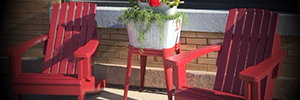The Profit Power of E-Commerce
According to Forbes magazine, only 28% of small businesses are using the internet to sell their products. That means the majority of small businesses are missing out on the power of internet sales, and as the e-commerce industry continues to grow, these small businesses will start to feel the limited potential of having a location-based company.
You can continue to run your brick-and-mortar store while diversifying your business’ revenue streams by incorporating aspects like drop shipping where the company doesn’t have to hold inventory, and you can still participate in the e-commerce marketplace by selling products that are in adjacent product lines.
The limits of a physical location start to melt away when you supplement your brick-and-mortar operations with the limitless potential of the internet.
Add Value For The Customer
When customers buy online, they typically have to pay extra for shipping. Some companies offer special deals or free shipping when the purchase amount meets a certain threshold. Brick-and-mortar stores can also play to their strengths by offering customers unique experiences that they wouldn’t get when shopping online, such as in-store exclusives, invites to engaging events or perks that offer convenience to the customer.
A great example of this is Medly Pharmacy which fills prescriptions and delivers them to customer’s homes for free in New York City. The founders of this concept had experience running brick-and-mortar pharmacies, but figured out how to take advantage of the internet as a way to boost their business, instead of falling prey to it.
“After seeing the hassles that consumers had to receive their medicine, we knew that there would be a smarter way to combine the most tedious aspects of prescription management into a solution that consumers love,” says Marg Patel, CEO of Medly Pharmacy.
Instead of running a traditional pharmacy they have elements like prescription management via their app, where users can schedule prescription pickups, refill prescriptions. They even offer free same day prescription delivery.
This format is also helpful for those brick-and-mortar locations with fragile and large items. If you have the ability to ship it to your customer, do it. Or better yet, deliver it.
Offer Local Pickup
Local pickup is a great way to get people to buy your products online. The option to pay for a product and pick it up from a local location helps 44% of consumers make a purchasing decision. And this benefits brick-and-mortar because it gets the customer in the door, where you have another opportunity to sell to them.
Walmart is a great example of this. When you look at Walmart’s website, it looks a lot like Amazon and other major online retailers, but there is a small difference. For the products that are fulfilled by Walmart, you can see if they are available at any of the locations near you. If they aren’t, you can still place an order and have the item shipped to your local Walmart for pickup free of charge.
Offer Better Deals In-Store
Offering a better deal in-store could be a double-edged sword, but it can drive traffic to brick-and-mortar stores and creates an opportunity to engage with customers in a more meaningful way. The fact of the matter is, people feel they can find the best deals online, and will often forego visiting a store for this reason alone. Giving them an incentive to make the trip can increase foot traffic.
Price matching either to your own online deals or your competitor’s prices will keep price-conscious customers from shopping elsewhere. Knowing that they can count on getting the best price available from one company gives the shopper confidence to not look elsewhere and creates brand loyalty.
BestBuy takes advantage of this strategy and implemented it to combat e-commerce competition by matching prices in store with their e-commerce counterparts.
Sync Your Online And Offline Efforts
At the end of the day, you want to sync your efforts online and in-store.
If you are offering a discount online, make sure it’s happening in the store, too. If a customer sees the product for sale online, but you won’t match the price in-store, or vice-versa, you are missing an opportunity to create a lasting client relationship.
Creating a consistent and helpful environment for customers is key. All it takes is one poor customer service experience to make a bad impression that a client will always remember.
There are plenty of ways that brick-and-mortar stores can maintain their share of the business and combat the growing e-commerce trend while joining in on the growth instead of falling prey to its projected success.








